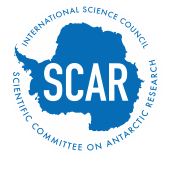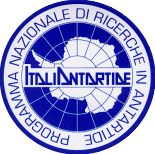|
Name ID: 105146
Place ID: 854
La existencia de esta isla fue cuestionada por los EE.UU. de N.A. sobre la base de levantamientos anteriores a 1956, que indicaron que este accidente podría ser una montaña parte de la península Tierra de O'Higgins. Consecuentemente, la denominan Mount Banck. En las cartas chilenas desde 1951 hasta 1957 figuró como isla Bank. Isla que está constituida por una montaña cónica de aproximadamente 320 metros de elevación, que se ubica en la entrada al canal Lautaro, a 6 cables al SSW de punta Rudolphy, que es el extremo SW de la isla Bryde, frente a bahía Paraíso, costa occidental de la península Tierra de O'Higgins.
|
|
Name ID: 854
Place ID: 6169
The largest island in the eastern part of the Thorfinn Islands, about 11 km north of Byrd Head, Mac.Robertson Land. These islands were probably seen by BANZARE (1929-31) under Sir Douglas Mawson. The group of islands was plotted from air photographs taken by the Lars Christensen Expedition (1936-37) and called Thorfinnoyane (The Thorfinn Islands). This island was first visited by I.R. McLeod ANARE geologist on 8 January, 1965.
|
|
Name ID: 107653
Place ID: 854
rising to 675m, S of Ferguson Channel, Danco Coast, was charted as an island (separated from the mainland by a narrow channel) by BeAE on 10 February 1898, when a landing was made in the vicinity; named Île Banck probably after a supporter of the expedition (Lec2ointe, map, 1899; Ar towski, 1900, p.129) or Banck Island (Cook, 1900, map p.xx). The feature was misidentified as Mount William (q.v.) (BA chart 1238, viii.1900). Monte Willians [sic] ([Irïzar], 1903, map facing p.4). Île Bank [sic] (Gourdon, 1908, p.89). Monte Guillermo [=mount William] (Riso Patron S., 1908, end map; [as rejected name] Chile. IHA, 1974, p.145). Bank Island (Ferguson, 1921, p.34). Monte William (Argentina. MM chart 106, 1949). Monte Contreras, probably after an Argentine sailor (Islote Contreras, q.v.) (Argentina. MM, 1953, p.333). Monte Laprida, so called by AAE after Francisco Marciso Laprida (1780-1829), Argentine statesman (Argentina. MM chart 129, 1957; Pierrou, 1970, p. 467). Following air photography by FIDASE in 1956-57, the mountain was shown to be the main feature of a small peninsula and named Mount Banck (APC, 1960, p.2; BA chart 3566, 25.viii.1961).
|
|
Name ID: 122165
Place ID: 854
Conspicuous mountain of red rock, 675 m, dominating the small peninsula just W of Mascias Cove, on the W coast of Graham Land. In 1898 the BelgAE under Gerlache applied the name "Ile Banck" to a feature which was charted as an island separated from the mainland by a narrow channel. Air photos show it is actually a small peninsula, on which the most prominent feature is this mountain. The name Mount William (q.v.), given by Biscoe in 1832 to a mountain which he described as being on the mainland but now identified on Anvers Island, has been used for the feature here described.
|

